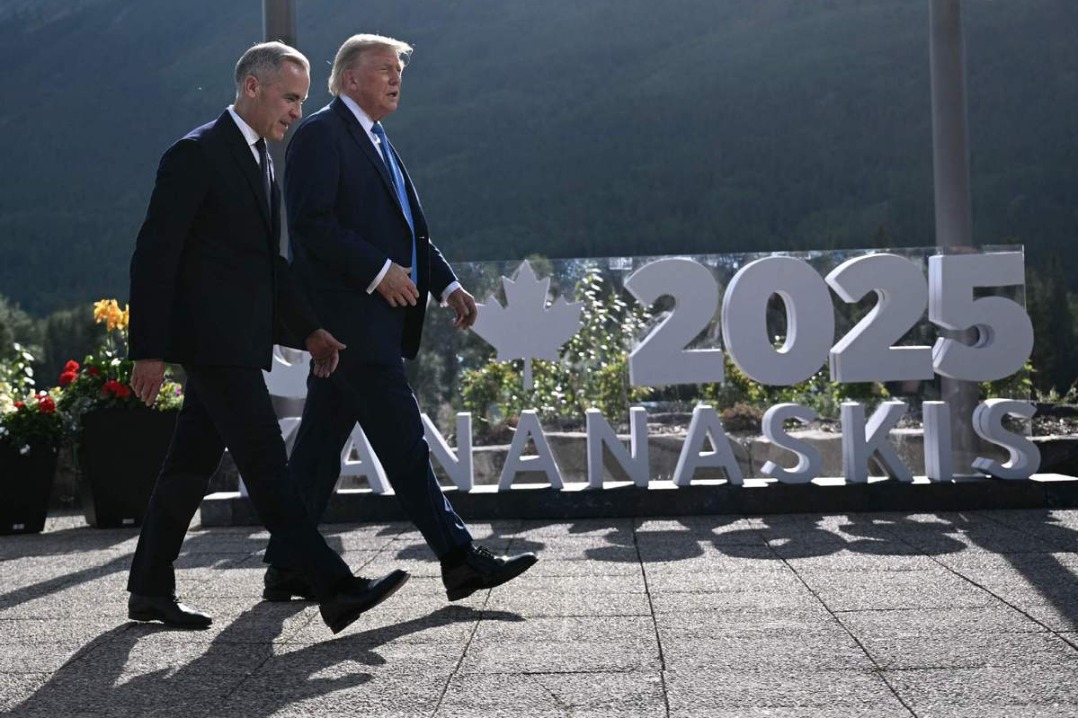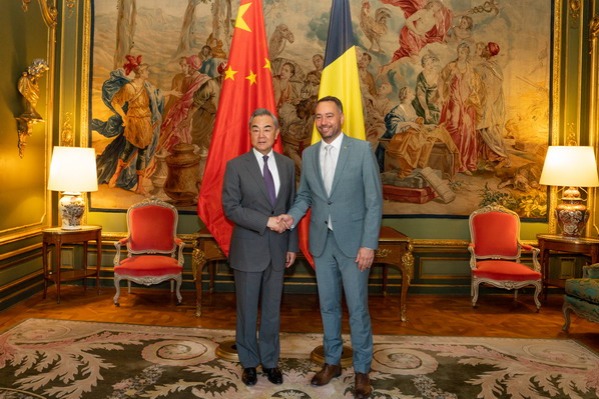Public, private sectors key to nation's modernization


The resolution adopted by the third plenary session of the 20th Central Committee of the Communist Party of China covers a broad range of issues. It is a detailed, comprehensive and strategic plan. The resolution can be described as a road map for China's long-term development.
The goal of transforming China into a great modern socialist country by 2049, marking the 100th anniversary of the founding of the People's Republic of China, remains unchanged.
However, it is important to clarify a set of intermediate objectives and establish their sequence. Also, the Chinese leadership has added 2035 as a milestone for the overall modernization of the country.
China's experience clearly demonstrates that the policy of simultaneously supporting the public and private sectors of the economy is not a short-term measure adopted during the transition from planning to implementation.
It is a long-term strategy aimed at maximizing the potential of enterprises of various ownership forms and engaging private entrepreneurship in achieving development goals in the interest of the entire nation.
There is no longer any basis for arguing that one of the two components — either the public economy or private enterprises — has limited prospects and will be phased out of the Chinese economy.
Private entrepreneurship stimulates economic activity and innovation, while the course of creating a modern industrial system remains inseparable from the development of large State-owned enterprises and government support for innovation.
From the perspective of the old Soviet model, private entrepreneurship is "superfluous". From the standpoint of the Western liberal model, public ownership is "redundant". Chinese modernization has surpassed these one-sided approaches by demonstrating its ability to attract private businesses to achieve national development goals.
The advantage of the Chinese system lies in the presence of two hands. The Soviet system had only one "visible hand of the state", with the exception of the period of the New Economic Policy in the 1920s. The modern Western system, in line with liberal theory, relies on the omnipotence of the "invisible hand of the market". China's successes can be explained by its dual management of the economy with two "hands", providing additional stability and using state governance mechanisms to prevent market failures.
To continue and build on this success, China must adapt its development strategy to the changed environment. China's external development environment has changed. The West is dismantling international production and sales chains involving China, increasingly blocking access to its advanced technologies. The only way forward is to improve the quality of the workforce, develop education and science, and support innovative developments. China seeks to modernize its industrial base and enhance self-reliance in key technologies that are currently controlled by the West.
Chinese reforms began in the late 1970s under the slogan "peace and development", a key innovative formulation of Deng Xiaoping. Chinese reformers understood that China had an excellent opportunity to achieve an economic breakthrough in a peaceful and stable environment. This favorable opportunity was fully utilized by China during the first three decades of reform.
The phrase, "cross the river by feeling the stones", gained worldwide fame. China reformed its planned economy using numerous experiments. Now, the demands for decision-making quality have increased significantly. For this reason, "top-down design" has assumed a leading role. In modern conditions, to ensure high-quality strategic planning and the practical implementation of decisions, unified centralized leadership of the CPC Central Committee is especially necessary.
Development remains a central theme for China, but it is increasingly accompanied by the term "security" in Party documents. The resolution adopted by the third plenary session of the 20th Central Committee of the CPC reflects the effort to organically combine the achievement of high-quality development goals with the protection of national security in all areas, including economic and technological security.
In his speech at the third plenum, President Xi Jinping, who is also general secretary of the CPC Central Committee and chairman of the Central Military Commission, reminded the country that China should prepare for unfavorable scenarios. At any moment, a "black swan" could appear, or a "gray rhino" could surface. This reminder reflects the CPC's significant attention to ensuring heightened resilience to risks. Unexpected developments should not cause a substantial slowdown in China's economic growth.
The West is making considerable efforts to contain China on all fronts. China understands that giving in to Western pressure would result in losses rather than gains. While a complete collapse of China's economy would be too dangerous for global economic stability, the United States is keen to secure concessions from China that would long delay its economic development, easing competitive pressures on Western producers.
The Western arguments for changing China's economic model are well-known. They claim that China has "excess production capacity" that floods Western markets with its products, which are supposedly cheap only due to state subsidies. Currently, there is a large number of Chinese goods, and they are highly competitive. Therefore, the West's interest lies in reducing the availability of these goods and making them as expensive as possible.
The West is eager to force China to reduce its presence in foreign markets, thus eliminating competition from Chinese high-tech products. However, the decisions of the third plenum of the 20th CPC Central Committee indicate China's determination to invest even more efforts and resources into developing advanced industries and acquiring new technologies. This is not just about independently replicating today's advanced technologies but also about investing in the technologies of the future.
That is why the concept of new quality productive forces was put forward. President Xi first spoke of the creation of new quality productive forces in September 2023. Speaking in Heilongjiang province, he called for the development of "strategic new industries", including new energy, new materials, advanced manufacturing and information technology, in order to "strengthen the new driving force for development". The concept of new quality productive forces reflects an updated understanding of the requirements for China's economic innovation growth in light of unfavorable external changes.


































